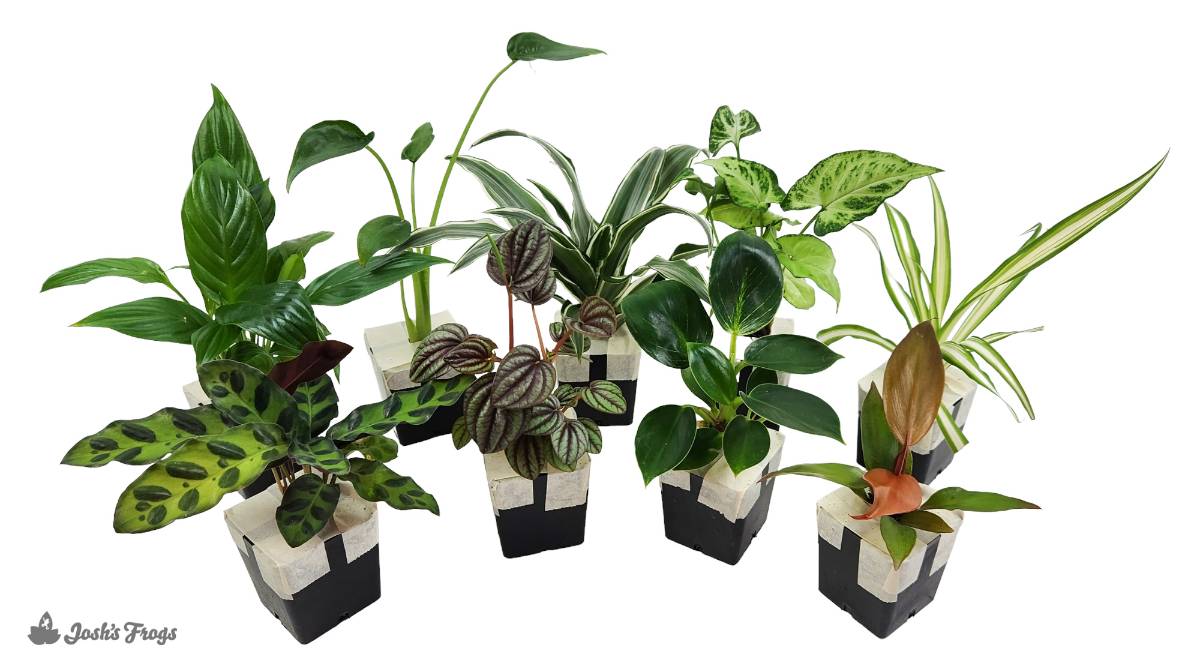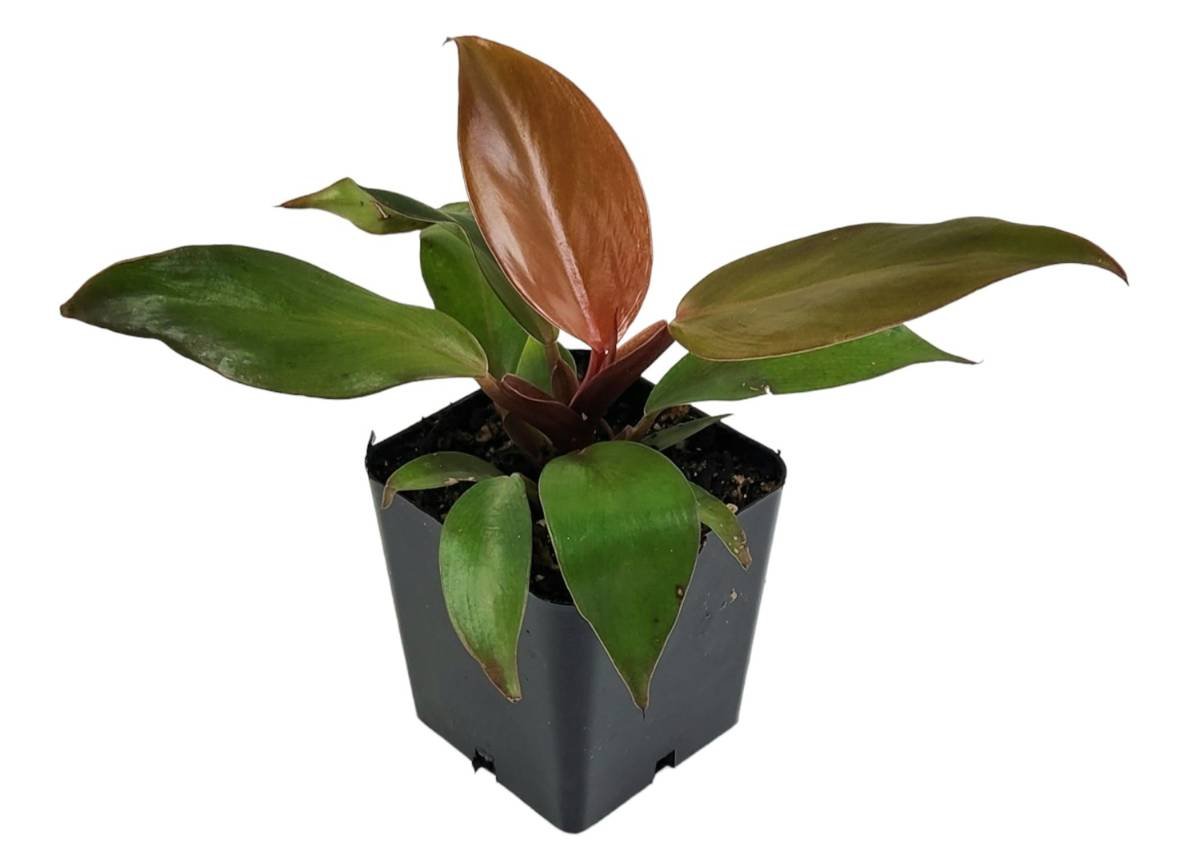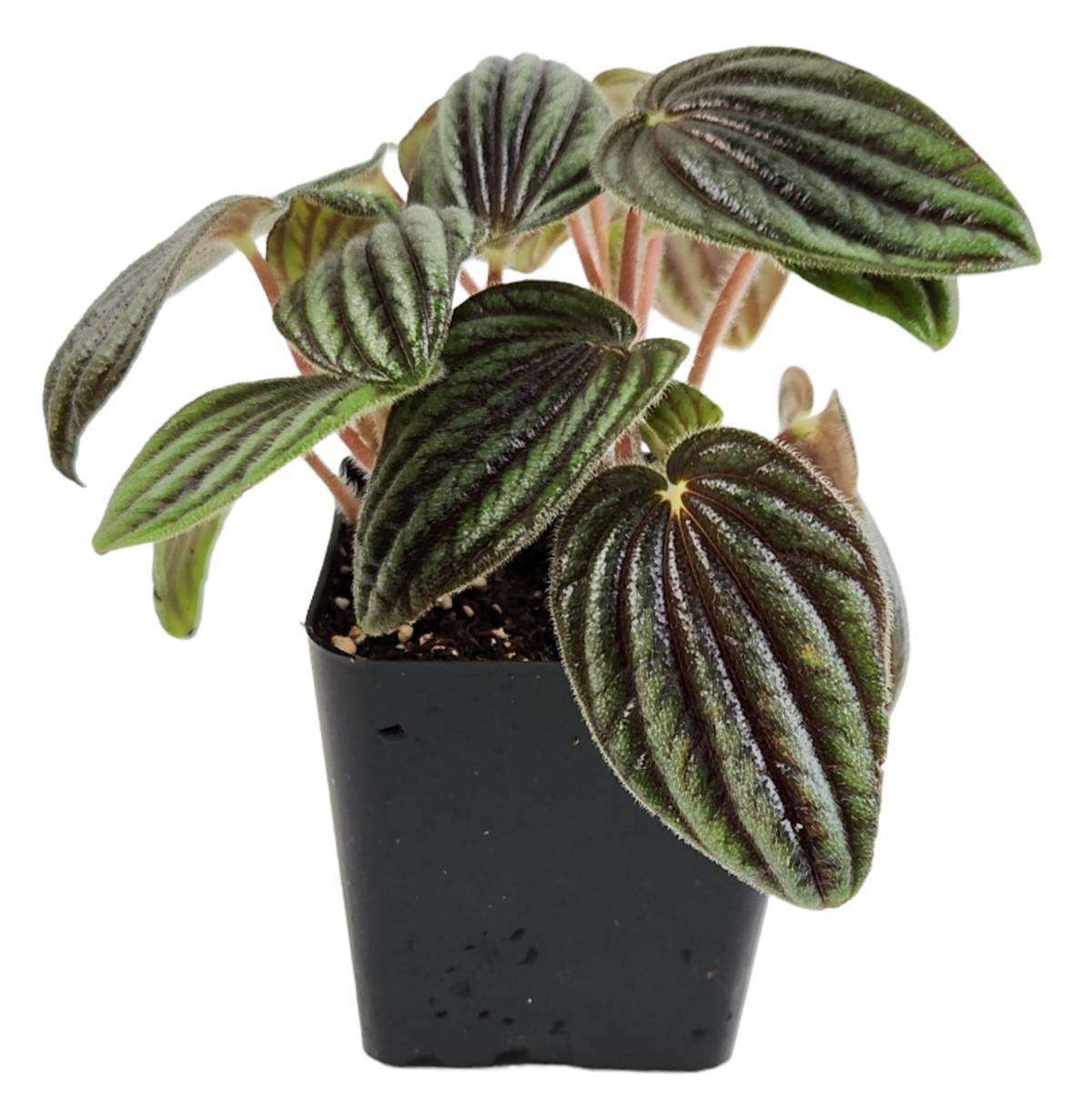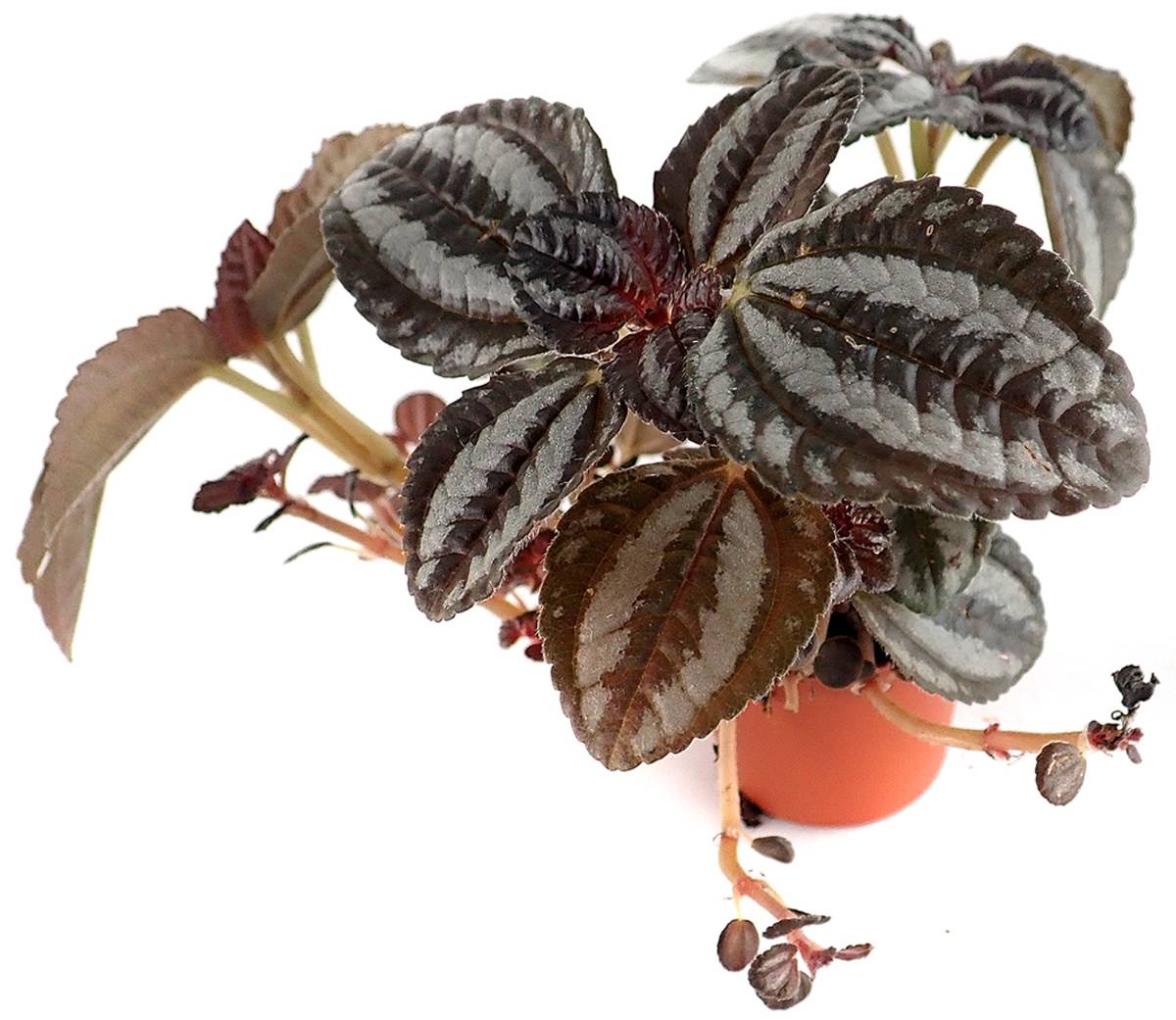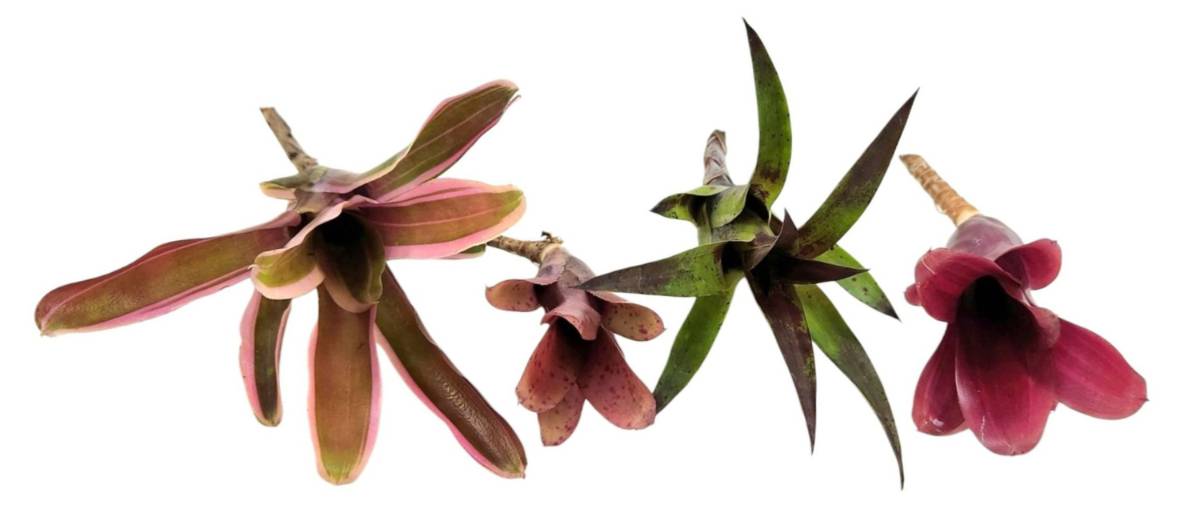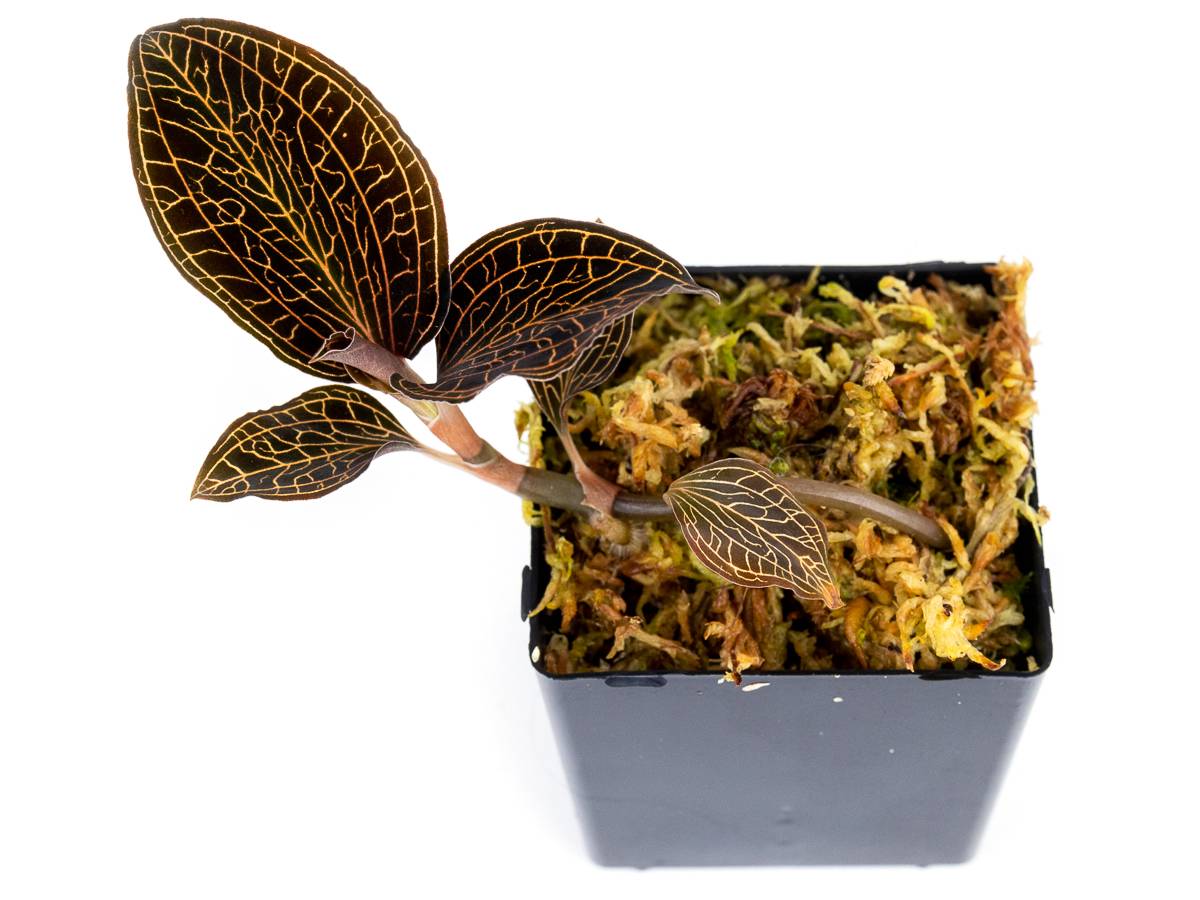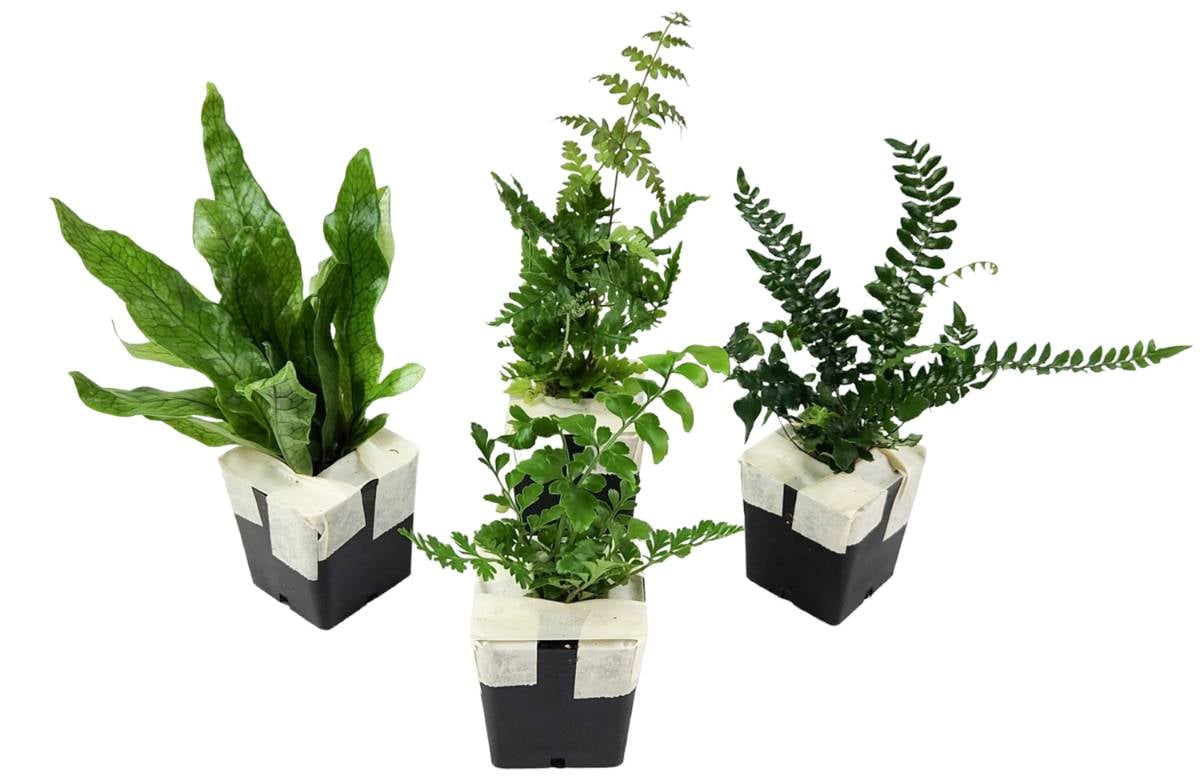Josh's Frogs
Why you should buy from us
Terrarium Plants 101
What should I put in my terrarium? Healthy, chemical-free plants from Josh's Frogs, of course! We work with thousands of terrarium plants, all grown organically and perfectly safe for animals. To select the proper plants, start by asking yourself a few questions.
First, what climate are you trying to imitate?
More importantly, if you're going to put animals in your terrarium, what conditions do those animals require? Most people think of a terrarium as a jungle environment—always warm, wet and humid. This is one of the easiest climates to replicate. Most of the commonly available dart frogs would do well in this environment. If you're raising reptiles, you may want a more arid environment, with lower humidity.
Other animals may require seasonal variation in temperature and moisture levels. These factors should guide your plant selection. Creating the ideal habitat is easy with Josh's Frogs Complete Care Kits!
Second, how much light do you have?
In general, terrariums should be lit by artificial sources. This is because a sealed terrarium can easily cook in direct sunlight. If you use artificial light, you can control its duration and intensity.
Choosing the perfect light for your plants is treated in other articles, as it can be a complicated subject. If you already have a light picked out, then install it in its final location above the terrarium and turn it on. Place your hand at different levels in the terrarium and look at the shadow you cast. A sharp-edged shadow means the location is receiving 'bright' light. A soft-edged shadow indicates 'medium' light, and a fuzzy shadow 'low' light. If you don't see much of a shadow, it's going to be tough to find a plant for that spot. You can always add larger lights or more lights, but for planning purposes remember that a plant placed high in the terrarium is going to shade the plants below it.
Third, how much variety do you want?
Some people are happy with just a few plant types or even just one rambling specimen that covers ground rapidly. Some people want dozens of different plants. Themes are popular, such as all bromeliads or all orchids—it's up to you. If you're just starting out, you can browse plant kits curated by animal in our Vivarium Plant Kits category. For dart frogs, we suggest a few small to medium-sized bromeliads (they hold water and provide hiding spots for frogs), some vining plants that can drape down your background, a couple ferns, and some assorted tropical plants.
Be aware that highly toxic pesticides are often used in large-scale foliage plant production. When you purchase plants, purchase them from a reputable supplier that uses animal-safe techniques (shameless plug - like the terrarium plants offered by Josh's Frogs!). If you do buy plants from a questionable source, consider growing them outside your frog tanks for a few weeks to a month. This is plenty of time for pesticides to decrease to safe levels.
Some people worry about fertilizer as well. It's virtually impossible to grow plants without at least some added fertilizer (plants need food to grow!). A little fertilizer won't hurt, but a good practice is to soak new plants in clean water for a few hours and rinse off extra soil or potting mix.
Plant Options
For the purposes of this discussion, let's assume we're building a terrarium to house dart frogs. That means high humidity and consistent moisture and temperature. There are many plants that will do well in this environment. Here are some sure winners:
Philodendrons
These plants are hard to kill. They will grow from even the smallest cutting and rapidly fill a tank. They're a good choice for tree frogs. Philodendrons tend to be rapid, easy growers. Be prepared to prune Philodendrons aggressively if needed. There are several different varieties of Philodendron available at Josh's Frogs, and all of them are great candidates for a vivarium, terrarium, or houseplant. Philodendrons will grow at almost any light level, but show better color and more rapid growth in higher light conditions.
Peperomia
There are countless species in this genus, and most will be great in a terrarium. They range from tiny leaves to large leaves, compact forms to vining. You could easily fill a terrarium just with different forms of this versatile genus. They usually grow in low light, but you'll get more compact growth with medium light.
Pilea
Like Peperomia, there are hundreds of different Pilea species and varieties to choose from. They are easy growers and easy to propagate through cuttings. Small-leaf vining forms include 'Red Stem Tears', 'Baby Tears', and 'Tiny Tears'. 'Creeping Charlie' is a larger-leaf vining form, which can easily fill a tank. Choose 'Moon Valley' (green) or 'Friendship' (purple) if you want a short bush. If your plant gets out of control, simply trim it back to size.
Bromeliads
No tropical vivarium is complete without bromeliads! In the wild, many species of bromeliad catch water in their hollow stems to form 'ponds' high up in the tree canopy. Frogs can use the ponds to rear tadpoles, and other animals and insects use them as well. With these lofty water sources, many animals never have to come down to the ground! The most common genus of bromeliad used in terrariums is Neoregelia. They flower, but the flowers are usually well within the 'cup', so you might never see them.
Bromeliads are true epiphytes (air plants) that don't require soil. They're very adaptable and grow just fine whether stuck into the background, on a stick, or planted in moss. You can also plant them in soil. Try to place them so they aren't sitting in water. Be sure to select varieties of Neoregelia that stay compact. I particularly like 'Fireball', 'Zoe', and 'Donger', which are all inexpensive and widely available, although any small-growing Neoregelia will do.
For a little extra interest, try another genus of bromeliad, like Billbergia with its deep, tubular water holding cups. Avoid most Tillandsia–if they have a powdery silver coating on the leaves, they won't do well. If your bromeliads lose their bright colors, they aren't receiving enough light. They grow okay in medium light, but develop their best color and form under very bright light.
Orchids
Consider an orchid or two in your next terrarium. It's a special touch. As a rule, most orchids are epiphytes that don't want soggy roots. Mount them on the background or plant them in a place that won't stay constantly wet. Some orchids to consider are jewel orchids, like Ludisia discolor or Macodes petola, which have beautiful foliage and do well in fairly low light. Restrepia have boring leaves but can bloom almost non-stop in a terrarium. The flowers look like a cross between a boat and a bug. Many Masdevallia are do well in terrariums. Small Bulbophyllum are excellent terrarium plants.
These are just a few suggestions. There are more than 25,000 species of orchids! A quick online search will give you some valuable information on any species you're wondering about. Avoid plants that get too large, have tall flower spikes, or require special conditions to bloom. If you aren't sure, ask the grower.
Ferns
Nothing portrays the image of a cool, damp forest like a fern. Great in low light and high humidity, ferns are easy to grow as long as their care needs are understood and followed. Many ferns not only have interesting fronds (leaves), but some also have visually arresting rhizomes (specialized stems), such as the rabbit's foot fern, which is fuzzy to the touch! Some ferns, such as staghorn fern, get quite large and make great display plants in a greenhouse, large vivarium, or hanging basket.
It's impossible to list all of the plants that will do well in a tropical terrarium. don't hesitate to try out new species, and contact us if you aren't quite sure which plants are right for you. You can reach the pros at Josh's Frogs by calling 1.800.691.8178, or sending an email to [email protected].


